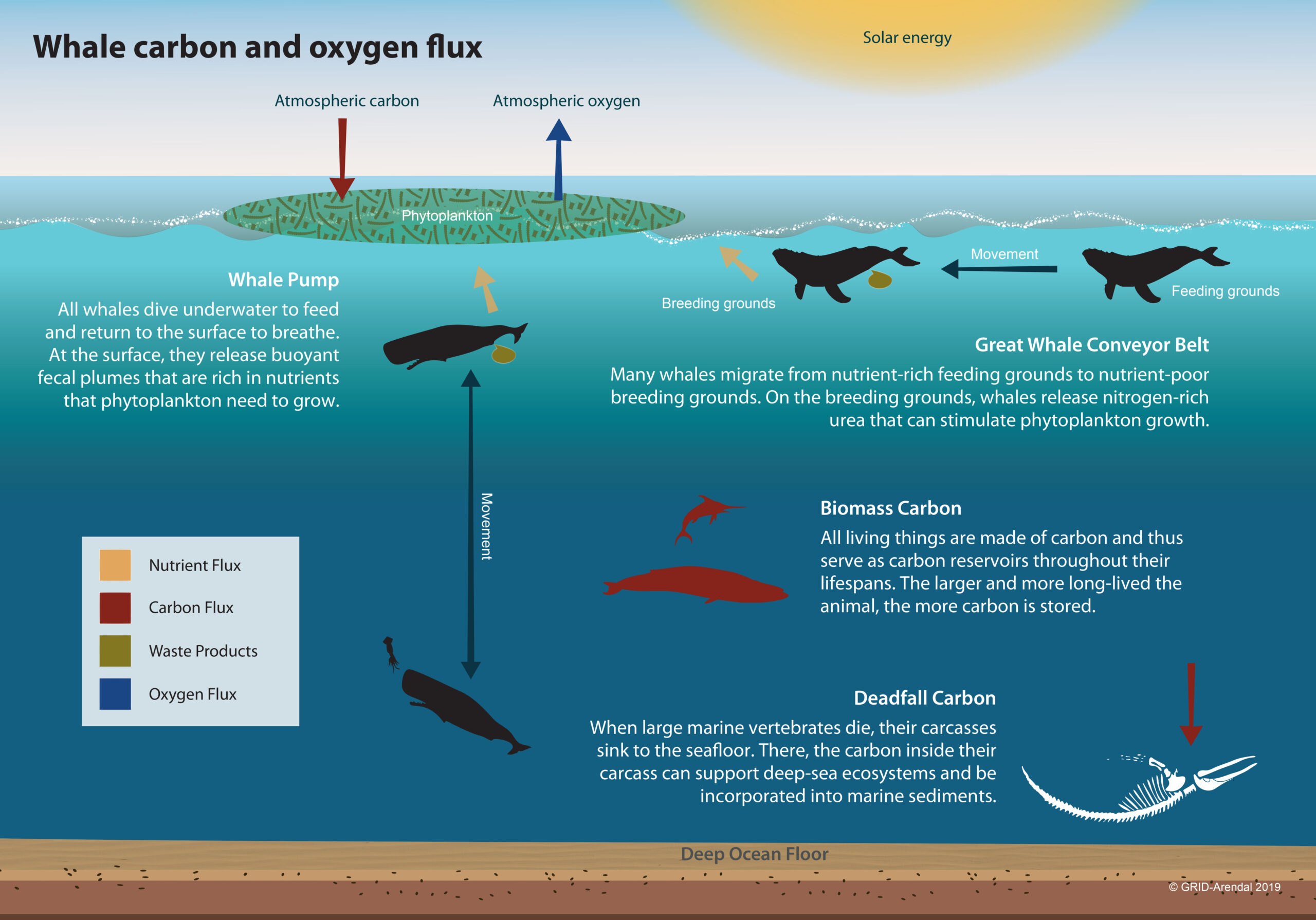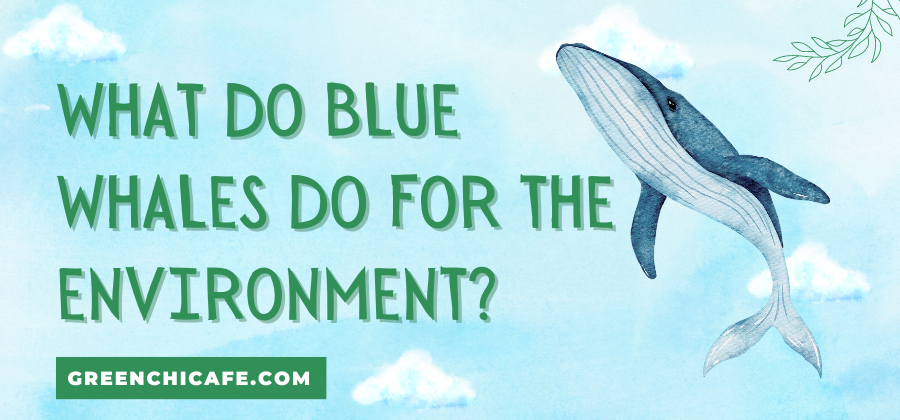Last Updated on June 3, 2024 by Annie Baldwin
Blue whales play a critical role in maintaining healthy oceans across the globe.
Their presence impacts everything from stabilizing the food chain to fertilizing the seas.
Understanding why blue whales matter provides insight into protecting marine ecosystems.
What Do Blue Whales Do for the Environment?

Blue whales maintain balance in the marine food web as apex predators, fertilize phytoplankton growth with their nutrient-rich feces, and transport nutrients between ecosystems through migration.
Their ecological influence supports ocean productivity and health.
Key Points
- Blue whales regulate prey species populations as top predators.
- Their feces fertilize phytoplankton growth, supporting the marine food web.
- Migrating blue whales transport nutrients between ecosystems.
Our Opinion
As marine biology experts, we believe blue whales serve a vital ecological role in ocean ecosystems globally.
Their influence as apex predators and nutrient recyclers maintains balance and productivity from the bottom to the top of the food chain.
Protecting blue whales is essential for sustaining healthy, resilient oceans that support human communities and life on Earth.
Why Are Blue Whales Important for the Environment?
Blue whales support the health of oceans in numerous ways:
- They prevent the overpopulation of prey species like krill through their feeding habits.
- Their nutrient-rich feces fertilize phytoplankton, increasing productivity.
- As apex predators, they help stabilize marine food chains.
- Their migrations between polar feeding grounds and breeding areas regulate nutrients.
- They sequester carbon through the whale pump, storing it in their bodies.
- Their carcasses on the seafloor provide a habitat for deep-sea organisms when they die.
In essence, the presence of blue whales and other marine mammals sustains entire aquatic ecosystems. From fertilizing algae at the base of the food web to supporting fisheries through the whale pump, the influence of blue whales propagates through the ocean.
That’s why conservation efforts for these giants of the sea aim to restore populations to healthy levels. Their integral role as ecosystem engineers means the fate of blue whales and the fate of marine environments are intertwined.
How Do Blue Whales Affect the Ocean Ecosystem?

As the largest animals on Earth, blue whales play a disproportionately large role in marine ecosystems. Their presence impacts the ocean in numerous ways:
- Blue whales are a keystone species, exerting top-down control on prey like krill and fish.
- Their feeding habits prevent overpopulation further down the food chain.
- Whale migrations move nutrients between feeding and breeding grounds.
- Their nutrient-rich feces fertilize phytoplankton near the surface.
- Whale carcasses that sink to the seafloor provide a habitat for deep-sea life.
- The whale pump sequesters carbon through their bodies and feces.
In many ways, blue whales act as ecosystem engineers – their presence fundamentally alters the ocean environment. From stabilizing food webs to storing carbon, their influence propagates through marine systems.
That’s why protecting blue whale populations is critical. Their recovery to pre-whaling numbers will allow these mighty mammals to fully express their role as guardians of the sea.
What Is the Role of Blue Whales in Climate Change?
As the largest animals ever to inhabit Earth, blue whales play an outsized role in mitigating climate change in several ways:
- Their bodies act as carbon sinks – each whale sequesters 33 tons of CO2 on average.
- Their feces are rich in iron and nitrogen, fertilizing phytoplankton growth that absorbs even more carbon.
- Whale migration mixes surface layers, bringing nutrients up from the deep sea.
- Whale carcasses transport carbon to the seafloor when they sink after death.
Some experts estimate that restoring whale populations to pre-industrial levels could capture 1.7 million tons of CO2 per year. That’s equivalent to the annual emissions of over 350,000 cars!
Protecting these gentle giants is crucial for a healthy ocean. As climate guardians, whales help remove carbon from the atmosphere and store it safely in the sea. Their conservation is vital for mitigating climate change.
How Do Blue Whales Contribute to the Marine Food Chain?

As the largest animal on Earth, the blue whale sits atop the marine food chain. Their role is vital in maintaining balance across ocean ecosystems.
Despite their enormous size, blue whales feed almost exclusively on tiny krill. An adult whale can consume up to 40 million krill per day, equivalent to 3,600 kg! This helps regulate krill populations and prevents them from dominating lower trophic levels.
Whale feces fertilize phytoplankton, encouraging the growth of krill’s main food source. This nutrient cycling supports the entire food web. When whales die, their carcasses also deliver nutrients to deep-sea ecosystems as they sink.
Furthermore, the migration patterns of blue whales promote biodiversity. Their movements distribute nutrients between disparate ocean regions. This helps sustain life across vast pelagic habitats.
By linking surface and deep waters, regulating krill, and transporting nutrients, blue whales are essential for healthy marine ecosystems. Their conservation is key to maintaining balance in the world’s oceans.
What Makes Blue Whales a Keystone Species?
Blue whales are considered a keystone species due to their disproportionate impact on marine environments relative to their population size. There are several reasons for their crucial ecological role:
- As the largest animals ever known to have lived, blue whales’ sheer biomass has an enormous influence on ocean food webs. Their position atop the marine food chain cascades down to affect organisms at all levels.
- Through consuming vast amounts of krill daily, blue whales help prevent krill population explosions. This regulates the abundance of phytoplankton and zooplankton, which many other species rely on.
- Nutrient cycling and transport are facilitated by blue whales through their feeding, migration, and waste products. This fertilizes primary production and connects distant ecosystems.
- As mainly krill-eaters, blue whales compete with other krill predators like fish, seals, and penguins. Their presence balances out these populations and promotes diversity.
- Even in death, blue whales support life. Their carcasses sinking to the seafloor provide sudden nutrients to deep-sea organisms when they decompose.
In essence, blue whales’ ecosystem engineering capacity and sheer biomass make them disproportionately impactful. Their conservation is vital for maintaining balance across marine food webs worldwide.
FAQ
Why Are Whales Important to the Environment?
Whales play a vital role in maintaining a healthy marine ecosystem. As large predators at the top of the food chain, whales help regulate prey species populations and prevent overgrazing of phytoplankton. Their feces also provide essential nutrients that fertilize phytoplankton growth.
What Will Happen if Blue Whales Go Extinct?
If blue whales were to go extinct, it would disrupt the balance of the marine food web. Their absence could lead to overpopulation of their prey species, which would in turn negatively impact smaller organisms they feed on. The loss of their feces fertilizing phytoplankton could also reduce overall ocean productivity.
What Are Blue Whales Used For?
Historically, blue whales were hunted extensively for their blubber, oil, and meat. Today, blue whales are protected globally and have no commercial use. They are valued for non-consumptive whale watching and their important ecological role in the oceans.
How Do Blue Whales Keep the Ocean Healthy?
Blue whales help maintain a healthy ocean ecosystem through their role as a top predator and their fertilizing feces. Their feeding habits regulate prey species populations, and their nutrient-rich feces fertilize phytoplankton growth that forms the base of the marine food web. Their migratory habits also transport nutrients between feeding and breeding grounds.
Conclusion
Blue whales play a critical role in sustaining the health of the world’s oceans. As the largest animals on Earth, they regulate prey species populations as apex predators and recycle nutrients by fertilizing phytoplankton growth with their feces. Their migratory habits also transport nutrients between ecosystems globally. Maintaining healthy blue whale populations is essential for supporting productive and resilient marine environments around the world. Protecting these majestic creatures ensures the continued balance of ocean food webs and overall ecosystem functioning.
